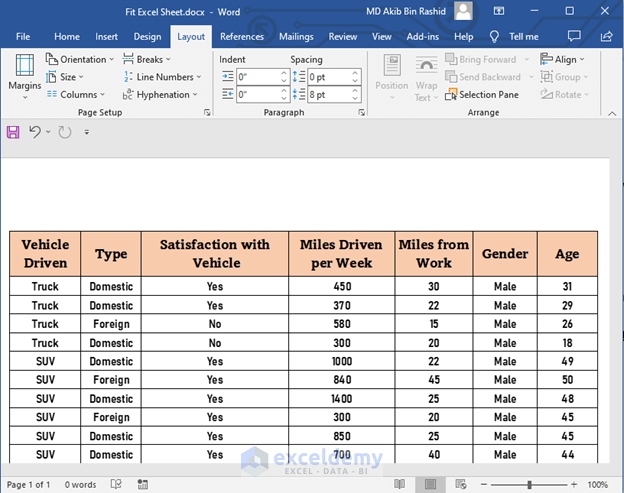Excel Page Fit: Full Sheet Printing Guide

Printing spreadsheets that cover multiple pages can be challenging, especially when you want the content to fit neatly without any breaks in information. Here's a step-by-step guide on how to set up your Excel document for full sheet printing, ensuring that each page is utilized efficiently.
Setting Up Your Document

- Adjust the Print Area: Select the cells you want to print by clicking and dragging. Then go to Page Layout > Print Area > Set Print Area.
- Modify Page Layout: Change the Orientation (Portrait or Landscape) and Scaling to fit your needs under the Page Layout tab. For wider spreadsheets, Landscape orientation often works better.
Here's a table summarizing the key settings under Page Layout:
| Setting | Description |
|---|---|
| Orientation | Portrait or Landscape for sheet orientation. |
| Scaling | Adjust % to fit content on one page or over several. |
| Margins | Customize margins to control spacing around your data. |

⚠️ Note: Over-scaling might make text or data unreadable if set too low. Find a balance where readability is not compromised.
Page Setup Options

Excel provides several tools under the Page Setup dialog:
- Page Tab: Set paper size, print quality, and first page number.
- Margins Tab: Adjust margins to control how data fits on the page.
- Header/Footer Tab: Customize headers or footers for each page.
- Sheet Tab: Define print areas, print titles, and gridlines.
Using Print Titles

To keep row and column headings visible across multiple printed pages:
- Go to Page Layout > Print Titles.
- In the Page Setup dialog, under the Sheet tab, specify rows to repeat at the top or columns to repeat at the left.
- Confirm your settings by clicking OK.
💡 Note: Print Titles are especially useful for large datasets where headers or labels provide context for understanding data.
Scale to Fit

This feature scales your spreadsheet so that all data fits on one page or spreads over multiple pages:
- Go to Page Layout > Scale to Fit.
- Set the Width and Height options to control how the data fits on the page. Options include Fit to, One Page, or custom dimensions.
Adjusting Margins

Adjusting margins can help fit more content onto each page:
- Use the Margins options under the Page Layout tab or customize in the Page Setup dialog box.
- Choose from Normal, Wide, Narrow, or Custom margins.
📚 Note: Smaller margins can accommodate more content but might compromise the document's professional look if data is too close to the edge.
Ensuring Readability

When scaling down, ensure your printout remains readable:
- Check for readability by previewing the print. If necessary, adjust scaling or choose a larger page setup.
In this guide, we’ve covered how to ensure your Excel spreadsheets fit neatly on printouts. By setting up your document correctly, adjusting page layout, and optimizing print settings, you can print your sheets efficiently. Remember to balance readability with the need to fit everything on the page. This optimization not only saves paper but also ensures that your data is presented in a clear, professional manner, regardless of the complexity of your spreadsheets.
How do I know if my document is set up correctly for printing?

+
Use Excel’s Print Preview feature. It shows how your document will look when printed. Adjust settings as needed to ensure everything fits on the page.
Can I print different sections of my spreadsheet on separate pages?

+
Yes, by setting multiple print areas. Select each area, then go to Page Layout > Print Area > Add to Print Area.
What if I need to print only the formulas, not the values?

+
Use Excel’s Show Formulas option under the Formulas tab before printing to display formulas instead of values.
How can I make my printed spreadsheet look more professional?

+
Utilize headers/footers, set uniform margins, and ensure clear readability by checking scaling. Use print titles for better context across pages.



